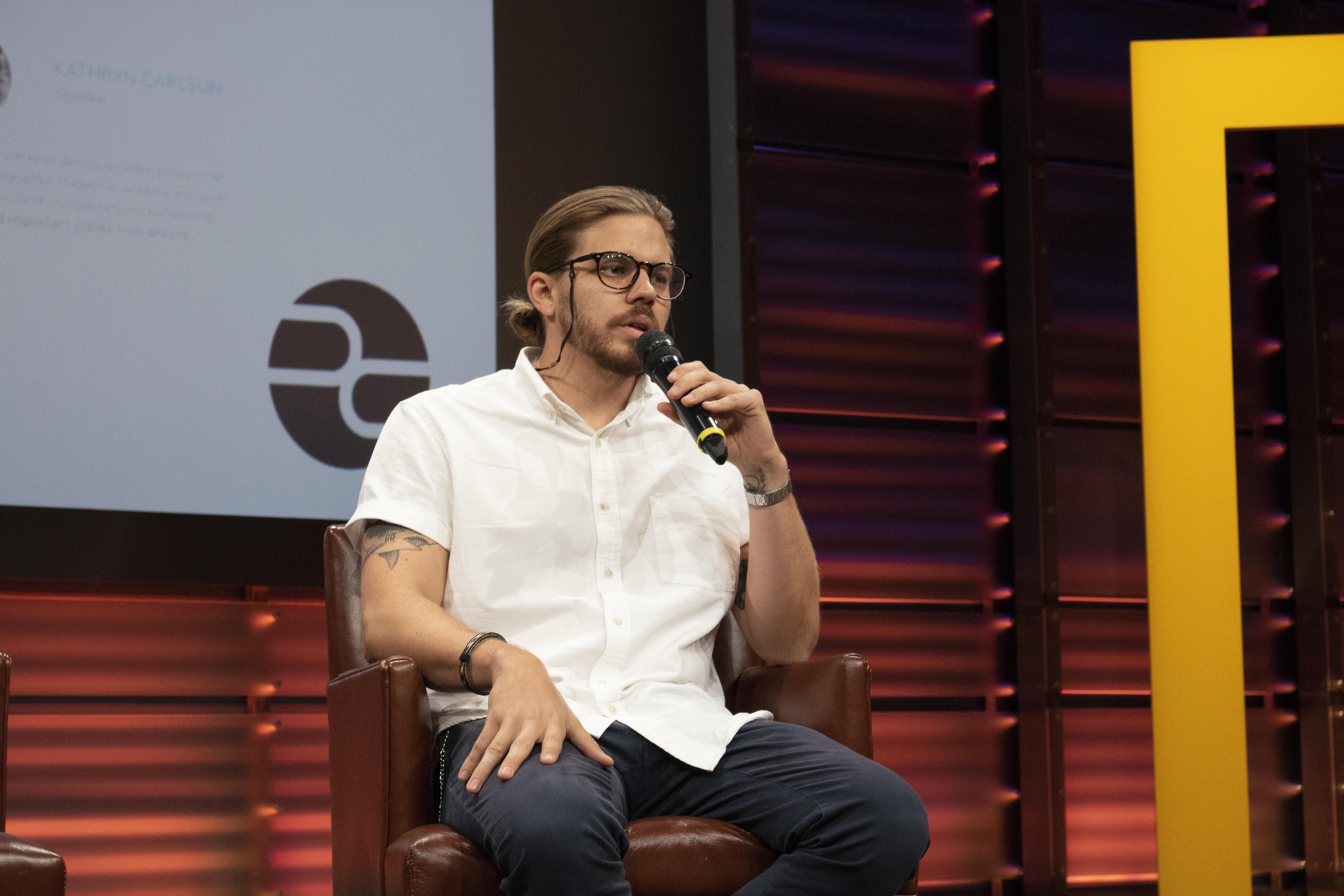150 students from MacFarland Middle School and School Without Walls at Francis Stevens piled into the screening room at National Geographic on Wednesday, May 9, 2018 to see two films funded by the Pulitzer Center and published in National Geographic.
The first film, Diego's Rebirth by grantee Dominic Bracco II, follows former gang member Diego Montejano on his quest for redemption as Juárez, once the world's most dangerous city, moves away from its long history of violence.
The second film, A World of Widows by grantee Kathryn Carlson, shows widows in Uganda struggling to keep their rights in a culture that contradicts the law.
Both film screenings were part of a three-day workshop that guided students in evaluating how journalists communicate underreported global stories by producing films that profile one person. The students met with Pulitzer Center staff before the screenings to evaluate how filmmakers identify subjects for documentaries exploring diverse global issues. They viewed grantee Sim Chi Yin's film "Dying to Breathe," which was published to the website for National Geographic, and worked in teams to evaluate how Chi Yin integrated interviews and visuals into building a bridge between the film's subject and the audience. In anticipation of the field trip to National Geographic, students then read short descriptions about Bracco and Carlson's films and worked in teams to consider how they thought Bracco and Carlson might create character-driven documentaries to tell those stories. At the screenings, students evaluated how well their predictions aligned with the actual films. Bracco and Carlson then took the stage to answer students' questions about how they reported and produced their films.
Students asked the grantees if they wanted to get involved and help when encountering people who are struggling like the subjects of their reporting. Bracco and Carlson explained the challenge that many journalists face when covering hard topics—remaining neutral and not inserting themselves into the story. Carlson said that because they documented the struggles their subjects are facing, it opens the door for viewers and organizations seeing the films to help in ways journalists cannot.
Both films covered hard topics ranging from gang violence to the cultural oppression of women, but the students remained engaged throughout the presentations. Students learned about National Geographic's mission, history and education initiatives by connecting with National Geographic's Education Program Manager Melissa McPhee, Senior Editor Caryl-Sue Micalizio and National Geographic Kids editor Brenna Maloney. At the end of the visit, students received copies of National Geographic Explorer magazine.
The next day, members of the Pulitzer Center's education team went to Francis Stevens with Dominic Bracco where "students practiced planning their own character-driven short films exploring under-reported issues in their communities, [such as] homelessness, pollution, and discrimination against women in the workplace," said Fareed Mostoufi, senior education manager. This gave some students a chance to plan their future reporting projects.
8th grade student Asha Rossiter wrote in a post-workshop survey that her favorite part of the workshop was," ....being able to plan a film. There are a lot of important things that we don't talk about enough that need to get out."
"It is a lot harder and more work that it looks," added her classmate Ari L.
Aniyah Gaffney wrote that she learned through the workshop that, "...both interviews and images can go hand-in-hand with setting tone and mood."
"I learned what to ask in an interview," added Nathaniel Cooper. "The person you pick is very important."
This field trip and workshop was funded by a grant from the D.C. Commission on the Arts and Humanities, which receives support from the National Endowment for the Arts. For more information on how to collaborate with Pulitzer Center to connect students with underreported stories published in diverse media outlets, contact our education team by emailing [email protected].












